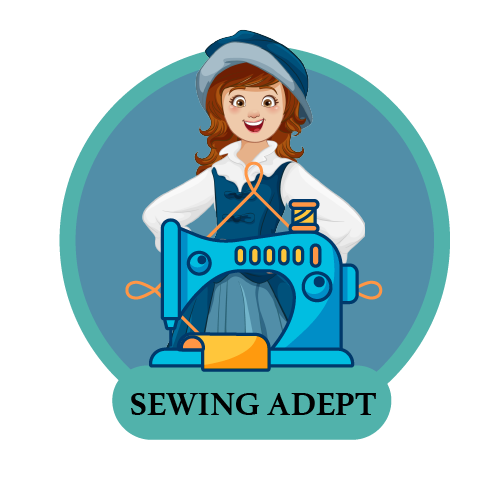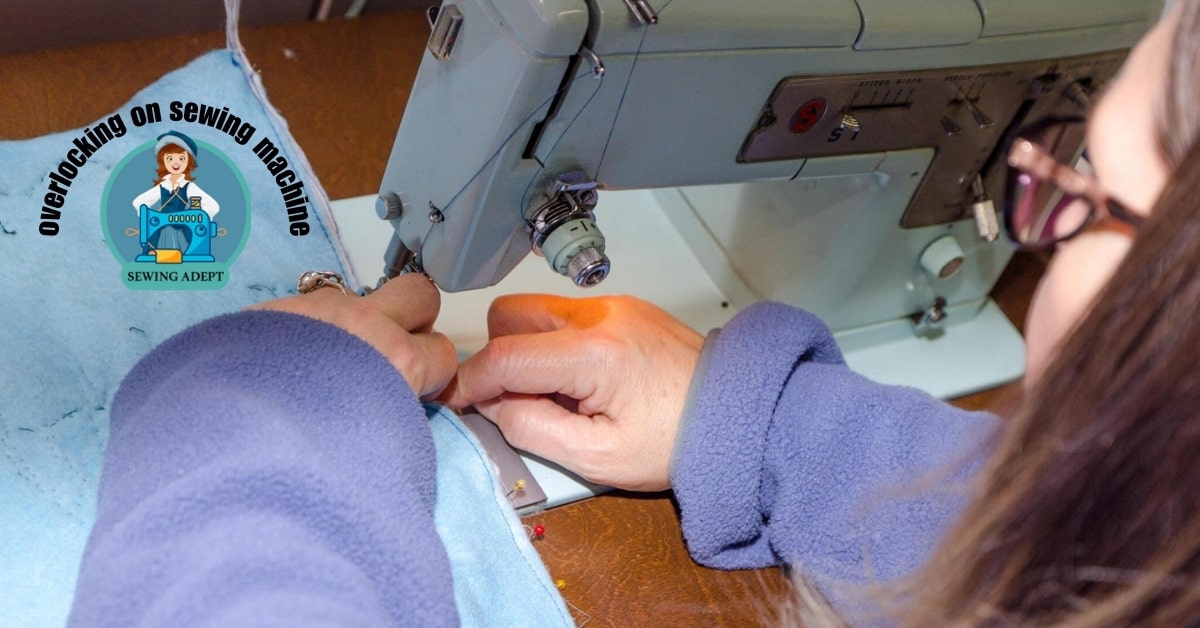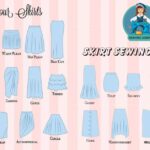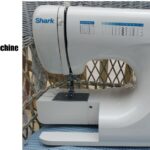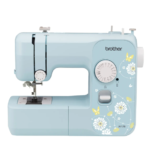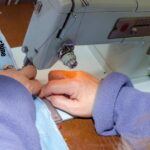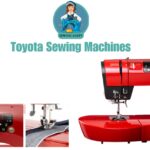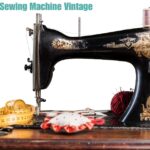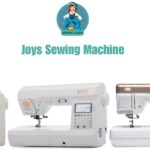Discover the revolutionary world of overlocking on sewing machine and unlock your creative potential. With the power of precision and creativity combined, overlocking allows you to achieve flawless finishes and professional edges. This specialized technique uses an overlock stitch to create secure, neat, and durable seams, preventing fraying and adding strength to your sewing projects. Get ready to take your sewing to new heights with overlocking.
Overlocking is not just about functionality; it’s a gateway to unleashing your inner artist. Modern sewing machines offer a wide range of decorative stitches and techniques that allow you to personalize your creations like never before. From elegant rolled hems to intricate pintucks, you can elevate your designs and add unique touches to your garments, accessories, and home decor items. Let your creativity shine through with overlocking.
Overlocking on sewing machines is more accessible than ever before. With user-friendly features, intuitive controls, and comprehensive guides, you can confidently explore the world of overlocking, regardless of your skill level. Whether you’re a seasoned seamstress or a passionate beginner, overlocking opens up a world of possibilities for you. Seamlessly sew stretchy fabrics, experiment with contrasting threads, and incorporate decorative elements to bring your unique vision to life.
Join the overlocking revolution today and experience the joy of precision and innovation. From flawless finishes to decorative flourishes, overlocking on sewing machine will redefine your sewing experience. Embrace the satisfaction of crafting one-of-a-kind pieces that reflect your unique style. With overlocking, you can thread your imagination and sew your dreams into reality. Discover the endless possibilities and embrace your creative journey with overlocking on sewing machines.
Overlocking on Sewing Machine: Unlocking the Power of Seamless Stitching
In this detailed guide, we will explore the world of overlocking on sewing machine and provide you with all the information you need to get started. From understanding the basics of overlocking to mastering different stitch types, this guide will help you elevate your sewing skills to new heights. For more information, visit here.
What is Overlocking on Sewing Machine ?
Overlocking, also known as serging, is a sewing technique used to finish fabric edges. It involves using an overlocker machine, which is specifically designed for this purpose. Overlocking creates a stitch that not only secures the fabric edges but also trims off excess fabric, preventing fraying and providing a neat and professional finish. Unlike regular stitching, overlocking uses multiple threads and loopers to create a strong and durable seam that can withstand wear and tear.
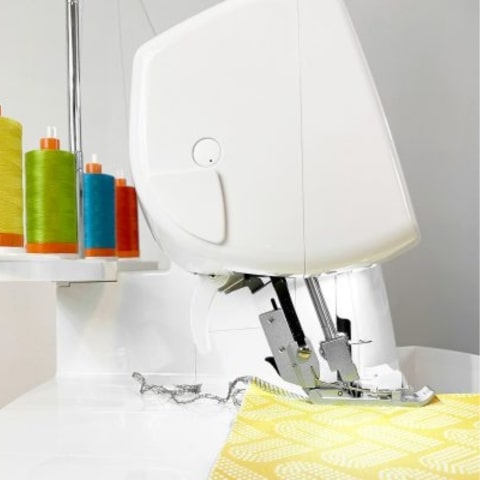
Benefits of Overlocking
The primary benefit of overlocking is preventing fabric fraying. By enclosing the raw edges of the fabric, overlocking ensures that the threads are securely locked, reducing the chances of unraveling. This is especially important for fabrics that tend to fray easily, such as woven fabrics. Additionally, overlocking creates strong and durable seams, making it ideal for garments and items that undergo stress during use. The finished look achieved through overlocking is clean and professional, adding a high-quality touch to your sewing projects. Moreover, overlocking is a time-saving technique, as it combines the steps of trimming, finishing, and stitching into a single process.
Choosing the Right Overlocker Machine
When selecting an Overlocking on Sewing Machine, consider factors such as your sewing needs, budget, and desired features. There are different types of overlockers available, including basic models for beginners and advanced machines with more functionalities. Look for features like adjustable stitch length, differential feed for handling different fabric types, and built-in threading systems for convenience. It’s also essential to set a budget and compare prices, considering the long-term investment that an overlocker represents.
Setting Up Your Overlocker
Before you start using your overlocker, prepare your workspace by ensuring you have enough room for the machine and your fabric. Familiarize yourself with the various parts of the machine, such as the needles, loopers, and cutting blade. Refer to the machine’s manual to understand the specific features and functions of your model. Taking the time to set up your overlocker correctly will make the stitching process smoother and more efficient.
Threading Your Overlocker
Threading an overlocker may seem intimidating at first, but with practice, it becomes easier. Begin by selecting the appropriate threads and colors for your project. Refer to the threading order specified in your machine’s manual, as it can vary depending on the model. Take your time to thread each thread through the designated guides, tension discs, and loopers, following the correct path. If you encounter any threading issues, consult the troubleshooting section of your manual or seek online resources for assistance.
Adjusting Tension and Stitch Length
Proper tension adjustment is crucial for achieving balanced and even stitches. Each thread in your overlocker has its own tension dial, which allows you to control the tightness of the stitch. Test your tension settings on a fabric scrap before starting your project. Adjust the tension gradually, making small changes until you achieve the desired stitch appearance. Similarly, stitch length plays a role in the finished look and the fabric’s behavior. Experiment with different stitch lengths to find the optimal setting for your specific fabric and project.
Understanding Different Stitch Types
Overlockers offer various stitch types to suit different purposes. The most common stitch types are the 4-thread and 3-thread overlock stitches, rolled hem stitch, and flatlock stitch. The 4-thread overlock stitch creates a strong and secure seam with two needle threads and two loopers. The 3-thread overlock stitch is more lightweight, using one needle thread and two loopers. The rolled hem stitch is ideal for creating narrow, neat hems, while the flatlock stitch is used for decorative and joining purposes. Understanding these stitch types will allow you to choose the appropriate one for your sewing projects.
Techniques for Overlocking on Sewing Machine
Overlocking can be applied to various sewing techniques. When constructing garments, overlocking can be used to join seams, ensuring they are strong and neat. Finishing raw edges with overlocking is an excellent technique for preventing fraying and providing a clean edge. Gathering fabric using an overlocker is a quick and efficient method for creating gathers or ruffles. Additionally, overlocking can be used decoratively, adding unique and stylish touches to your projects.
Troubleshooting Common Issues
Like any sewing technique, Overlocking on Sewing Machine may encounter some common issues. Uneven stitches can result from tension imbalances or incorrect threading. Skipped stitches can occur if the needles are dull or not inserted properly. Breaking threads may be caused by incorrect tension, threading errors, or using low-quality threads. Misaligned seams can be a result of improper feeding or incorrect stitch width settings. Understanding these common issues will help you troubleshoot and resolve them effectively.
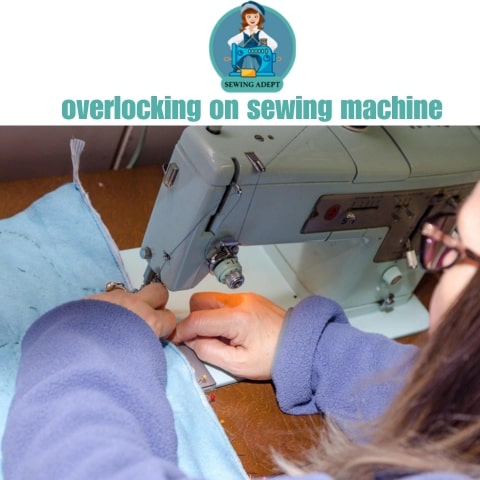
Tips and Tricks for Successful Overlocking
To enhance your Overlocking on Sewing Machine, consider these tips and tricks. Choose the right needles for your fabric type to ensure smooth stitching. Utilize the differential feed feature when working with stretchy or lightweight fabrics to prevent puckering or stretching. Experimentwith stitch variations, such as decorative thread or stitch combinations, to add unique touches to your projects. When handling tricky fabrics, such as slippery or delicate materials, practice on scraps first and make tension and stitch length adjustments accordingly. Take your time to master the techniques and be patient with the learning process.
Maintenance and Cleaning
Regular maintenance and cleaning are essential to keep your overlocker in optimal working condition. Follow the manufacturer’s instructions for oiling and lubricating the machine at recommended intervals. Clean the machine after each use to remove lint, dust, and fabric fibers that can accumulate in the feed dogs, loopers, and cutting blade. Store your overlocker in a dust-free and dry environment when not in use to prevent damage and ensure its longevity.
Conclusion:
Overlocking is a powerful technique that unlocks the potential for seamless stitching and professional finishes in your sewing projects. By understanding the basics of Overlocking on Sewing Machine, and mastering different stitch types, you can elevate your sewing skills and create garments and crafts with a polished and durable look. Remember to practice, experiment, and be patient as you explore the versatility of overlocking on your sewing machine. With time and experience, you’ll discover the endless possibilities and creative opportunities that overlocking brings to your sewing endeavors. Enjoy the journey of unlocking the power of seamless stitching through overlocking!
